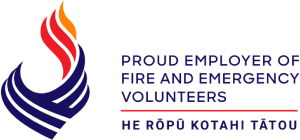First Aid Management of Anaphylaxis
By Ritchie Verano
Anaphylaxis is a severe, potentially life-threatening allergic reaction.
When a foreign or harmful substance enters our body, the immune system produces antibodies to fight against the foreign substance. For some, the immune system inaccurately recognises the foreign substance (allergen) as an invader and starts to generate antibodies against it. These antibodies attach themselves to mast cells that are in various parts of the body like under the skin, in the lungs, eyes, nose and gastrointestinal tract.
When someone is exposed to an allergen, IgE (linear gingival erythema) antibodies will catch it, triggering the mast cells to produce powerful chemicals such as histamine. The immune system overreacts to the substance. Symptoms usually occur within 5-30 minutes, but can occur up to several hours later. Severe allergic reactions normally occur within 20 minutes post exposure.
During anaphylaxis, the immune system will continuously release a flood of inflammatory chemicals to attack the allergen that triggers the body to experience changes and symptoms that may result in shock. Potentially it is a life-threatening medical emergency that requires urgent care and treatment. Severe allergic reactions can happen without any previous exposure to a trigger.
An allergen is a substance that causes/triggers allergies. Allergens come in various forms. Common food allergens are peanuts, eggs, cow’s milk, fish, shellfish, soy, wheat, tree nuts (cashew, almond, Brazil) and soy.
Food allergens common for children/adolescents/older children are seafood, peanuts, and tree nuts. Infants can be triggered by egg and dairy.
Common airborne allergens are pollen, dust mites, pet dander (microscopic flecks of skin shed by animals).Injected venom from stinging insects like bees, wasps, and ants and traditional or herbal prescribed medications and antibiotics such as penicillin, aspirin, opioids, and intravenous contrast for medical imaging can all cause anaphylaxis. Even cold can trigger an anaphylaxis reaction in children. Latex in rubber products like balloons, dummies/pacifiers and rubber gloves are also a common cause. Individuals can manifest one or more symptoms. Severity and time of onset can vary.
Anaphylaxis can be diagnosed through blood tests, a RAST test or radioallergosorbent test and skin prick testing.
Mild signs and systems are welts, hives (itchy, raised welts, red, pink, or flesh-coloured), evidence of swelling to lips, eyes and/or face, abdominal pain and vomiting (typical with food allergy), tingling mouth. Anaphylaxis/severe allergic reactions can include persistent coughing, collapse/loss of consciousness, confusion, constant dizziness, abdominal pain/cramps and vomiting (insect allergy), swelling of tongue and tightness/swelling of throat, hoarse voice and difficulty speaking, weak and rapid pulse, wheeze/whistle when breathing and evidence of difficulty.
Lifestyle changes are recommended. For health promotion, avoid exposure, wear a medical alert necklace/bracelet to identify the known allergy. An emergency kit with prescribed medications must be checked regularly and should include an epinephrine autoinjector. (Check expiration date and replace when necessary.)
Food and drink labels should be checked to assess for allergic contents e.g., chocolate can often have a nut warning and extra vigilance is needed when dining out.
If an allergic reaction is suspected carefully lay the person flat. Stop further exposure to the trigger/allergen if it is safe to do so and call 111 and ask for assistance. Ask the person if they have an adrenaline (epinephrine) auto injector. If they have an EpiPen and know how to self-administer they should do so. Read instructions to ensure correct use.
Other First Aid:
- Further adrenaline may be required – trained healthcare professionals will administer this. Oxygen may be administered (within scope of practice and direction), commence CPR – if the person is unresponsive and not breathing normally.
- If the patient has a history of asthma, they may require both their auto injector and their regular asthma medication – seek professional advice. You may also be advised to administer an antihistamine which the person may be carrying.
- There are two brands of adrenaline autoinjectors in New Zealand, Anapen and EpiPen each contain a single, pre-measured dose of adrenaline.
- Reassure the person and often an application of a cold cloth around the throat can help with swelling.
Back to Blog








